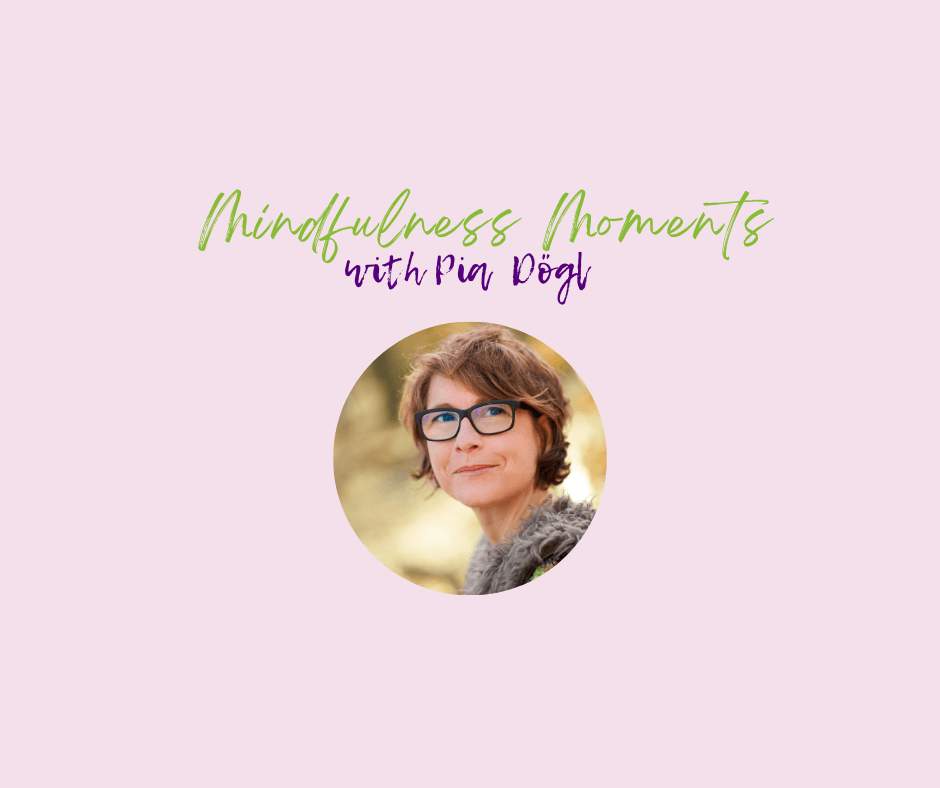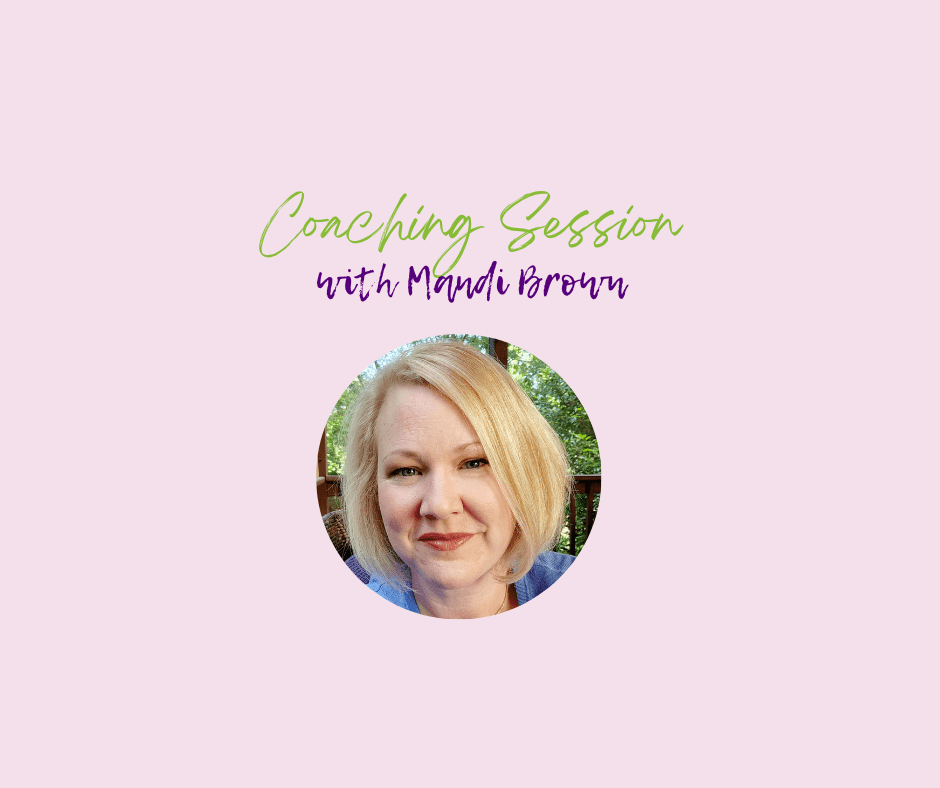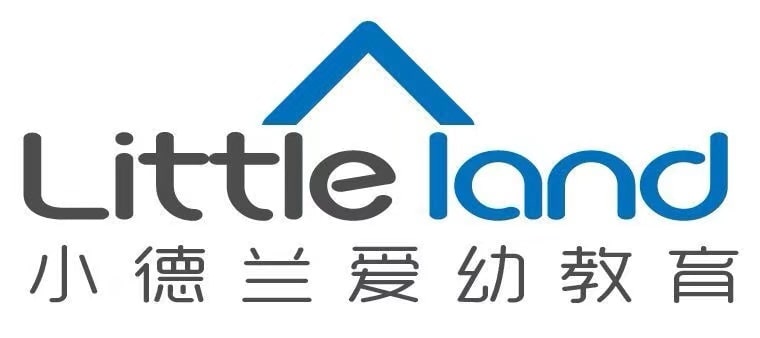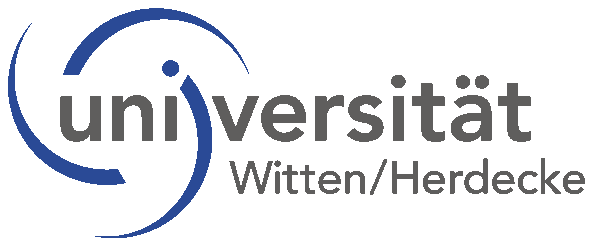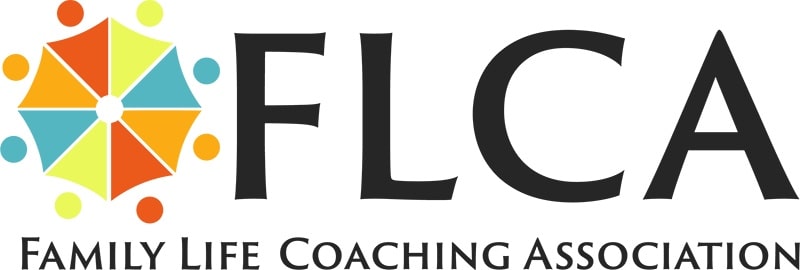Project Description

Read the transcript
Pia Dögl: Hi there, mama. Are you searching for another way to approach motherhood? One that puts your needs first, that allows you to live it all without guilt or holding back any of your amazing talents and unique gifts, then the Live It all Mommy Podcast is made for you. Each month we are taking you behind the scenes, looking into the real world of motherhood.
Giving you a roadmap to unleash your unique potential, your passion, self-trust, and purpose as an amazing mother, deep soul, and powerful working woman, it’s time to live at all. Mommy, let’s dive in.
Do you want to learn to stop feeling like an inadequate parent? To get rid of your self-limiting beliefs and feelings of guilt or fear? I’m most delighted to have Holly Elissa Bruno as our guest.
She is a best-selling award-winning author, international keynoter, and one of the rare parenting experts that I’m aware of who is not only teaching others how to be the best parent they can be, but she’s also living what she teaches.
Holly Elissa thank you so much for being here.
Holly Elissa Bruno: I thank you, and you’re welcome. I’m so glad to be with you and so glad to be with everyone who has the courage to come to this program and look at themselves. That’s a gift.
Pia Dögl: And in your experience, how can we become more aware of our self-limiting beliefs and negative feelings such as guilt, fear, or shame?
Our daily life usually is around self-limiting beliefs. What I’m not able to do and what I should do better, et cetera. So what is your experience? How can we moms and working women be more aware of what’s actually going on inside us?
Holly Elissa Bruno: That is a lovely question and I’m looking forward to just imagining what people are saying who are listening to us.
I wake up in the morning often to, “Oh my God, what have I got to do? Oh my God, how can I get this done?” And in that kind of mind jamming way, I’m hardly being present to myself. At the end of the day, I used to go to sleep with my checklist.
Have I accomplished this? And have I accomplished this? And is my son doing okay on this? Those all call me to live a life from the outside in.
The thing that helps me most, is I’m learning to live my life from the inside out. I learned to be a mom from the outside in and that wasn’t being me. I read books. They were very helpful. They connected with me and I listened to people and I was a mom before there were podcasts, before all of this. But I listened and I talked with people. The truth is, if I’m trying to be somebody else, there’s no way I can be myself.
My son came from Korea when he was ten months, and my daughter came from Korea when she was five months. Now for many of you, your child looked at you from birth, and they’re looking to see who is this person? And I trust this person.
And I thought, if I do all these things coming from the outside in, this is what a good mom does. And many of those things worked. They did work. However, the thing that has helped me the most is to say that baby who’s looking at me is looking for a connection.
And that baby cannot connect with me, nor can that 98 year old soul connect with me, if I’m not present. So my life journey has been about learning to be present.
Learning to be with my son, for example. My son is Neurodiverse and he was in diapers until he was seven and he drooled, and so to manage our images, I would send him every day to preschool with a stack of perfectly folded, sweet smelling colorful bandanas. And I would work with the teachers that whenever the bandana got wet, they just would toss it in a bag and I’d take it home and I would wash it.
And what was I doing? Well, I was making the appearance. I was making my son look good, I thought with a bandana, he looked like a little cowboy. He looked adorable. I was making it possible for the teachers to remove those, so he wasn’t all soaked. I was doing these things to protect him.
However, I was also doing it to protect myself. What kind of mother was I that I had this son who was four and a half, five years old and he can’t stop himself from drooling and other kids were difficult, painful to him for that. They were difficult, painful to him because he couldn’t control his bowel.
What did this call us both to do? I learned to stop coming from the outside in, trying to help my son look good so he could be accepted. Trying to help myself feel good so we all could be accepted because I didn’t think I was such a great mom. If I was such a great mom why wasn’t my son able to use the toilet?
I thought it was about me but it had nothing to do with me. So just to sum this up, it’s still taking me a long time, but once I learned that covering up or lying essentially about my son’s challenges was not helping him. When people would look at me, he would speak what Shakespeare would call gibberish.
And I would try to make sense of it. And so someone would look at me and say, what did he say? I would make up what I thought he was saying that was no service to him. The loving thing I could do was to step back and watch and support. That was so hard.
Pia Dögl: It takes so much courage to go out there and to tell the truth. And, , you were saying it wasn’t helping him. It wasn’t serving you. And I would also say it isn’t serving people who are struggling with the same issues. So if we want to, and that’s the gift, if we are facing challenges as a parent and working woman to share what we are going through in an honest way, helps others to not feel the same pain or to feel alone.
So this principle of common humanity can’t grow if we all hide what we are struggling with. So it’s so important to be honest about what’s going on at home.
Holly Elissa Bruno: Pia, I love what you’re saying because to me it’s the heart of your work. It’s the heart of this program.
You’re inviting everybody else to say, what is your truth? You don’t have to impress me. You don’t have to pretend that everything is great. Whatever your truth is, that’s what can set us free. And I brought from the outside in all of these blames and shames right into my parenting.
I felt like, my son is troubled so it must be my mistake, my fault. It was very egocentric. But it wasn’t the selfish egocentric, it was the self-blaming egocentric. I blame myself because it was so heartbreakingly sad to see my beautiful son unable to form words.
And when a teacher would say to him, just use your words, Nick, I would want to scream, he doesn’t yet have the words. Let’s help him in other ways. The sadness that I had inside of me when I looked at my son was so great that I didn’t think I could bear it.
And yet covering it up. No. I will share with many people what happened yesterday when I was in this car accident. I hit another car. I am so grateful no one was hurt but I felt responsible as the elder in that car to make sure that the three of us, all of whom in our own ways have had sadness and sorrow, could debrief. Because I know one of the things that helps most is not to cover up and say, “Oh, we’ll be okay.”
My father would say to me, it didn’t happen, daughter. And I knew as a child when he would say that to me that something was terribly wrong. So the lesson that I am learning from the inside out yesterday is to stop the process. And here’s the specific answer to your question. Stop the process, stop everything and ask myself how am I feeling?
Pia Dögl: Yeah. To reconnect with yourself first.
Holly Elissa Bruno: Exactly. If I can take that step, it’s like , a ship taking, a sounding to see how deep the waters are. If I can take that sounding and see how am I feeling? That will ground me. Feelings are messengers. The sadness gives me the message: I’m feeling very sorrowful. Something happened, not only did it happen, it could have hurt people. It didn’t let me take responsibilit and let me fall flat on my face and beat myself up because I want to be present to myself. I want to be present to these two young men who are looking at an adult and saying, how does she do herself?
If I did myself by saying, “Oh my God, the stupid car got in my way.” or “Oh my God, how could I have been so stupid?” All we’re learning is shame. And that’s not what I wanted to impart.
Pia Dögl: And you already answered a little bit of the next question.
What would you say helped you the most to transform your negative feelings. I have already difficulties to call it negative feelings because those negative feelings are the door opener to some positive things you mentioned t o econnect with yourself. And with that, we are able to connect with others.
But what would you say helped you to transform those self-limiting feelings, thoughts, et cetera?
Holly Elissa Bruno: I love that question.
Pia Dögl: Is the core to always check in with yourself and to reconnect with yourself? What would you say is the most helpful thing?
Holly Elissa Bruno: That helps a lot? That simple step of just saying, in the midst of everything that’s going on, how am I feeling? And yesterday I was grounded by that. I knew I was sad.
There are times, and many of you know the neurobiology of this, that I get so overwhelmed. The amygdala gland, the primitive part of our brain, the part of our brain that just tells us, get to safety, get to safety.
When that takes over, I’m now aware that 90 to 95% of my executive function, the part that helps me reconnect with love, that helps me reconnect with spirituality, helps me reconnect with healing, that goes away.
And so one of the other things I can do to get back in touch from that horrible place of shaming and blaming and feeling so awful about myself, one thing is to ask how I’m feeling. If that’s too scary, which it can be, sometimes I can then walk up to the balcony of perspective, which allows me to say something to myself like… gentleness,humor, love and respect. It’s like, “Holly Elissa, sweetheart, you are hurting. You are so hurting right now and I’m so sorry. I’m so sorry. I want you to know you’re not alone. You don’t have to go through this alone.”
I had a trauma therapist and I look very hard to find trauma therapists who are themselves recovering, continuously growing. And so I’ve only had two of these people and the most recent person said to me the thing that we do not hear, and this is such a mothering statement and such a child loving statement, “The thing that children need most to hear, that traumatized children don’t is, ‘I’m here with you. You don’t have to go through this alone. I am right by your side.'”
If the parent were to say, “I’ll take the pain away,” that wouldn’t work because the child is hurting. My mother used to say to me when she was at her best, was, “I wish I could feel this pain for you.”
And that just made me sad for her. It was what I really needed to hear, and I knew she meant well, but what I really needed to hear was, and I say this to myself now, “Sweetheart, you’re not alone. You don’t have to go through this alone.”
And if in that moment I feel alone, I can reach out with my heart to people saying, I’m going to call inside myself.
I can say, I’m going to call you Connie in two minutes when I can get free, because I need your support.
I’m going to give you an example. I was in a hospital having been called in, and many of your mothers will know exactly what I’m talking about, I was recalled for a mammogram.
I’m often called back, but this time I was called back and I went through a second mammogram and then I went to another room for another test and it was over an hour and I hadn’t taken anyone with me because I thought I’ll be okay. I’m used to this.
Not okay. I didn’t want to feel this feeling, but I said, “How you doing sweetheart?” I realized I was panicking. And that’s a feeling we want to run from. I want to run from. It is just so discomforting and it tells me to flee, get out of there, or to dissociate from my body.
And I didn’t want to do any of that. So I picked up my iPhone and I started texting dear friends, and I told them the truth. I am in Clinton Hospital. No one is able to talk with me. They’re all technicians. I am scared. Could you please connect with me and let me know you hear me?
Ping, ping, ping, ping, ping, ping, ping. People got back to me. That’s what I needed, that connection that I wasn’t alone, even if it was just the ping. And then I started reading, “I’m with you. I love you. You’re not alone”. That’s what friends were saying.
And guess what happened? At that point, the doctor and his assistant came in and I was so involved with this that I didn’t see him. And I looked at him and he rolled his eyes and then he said to his technician, “Well, I guess we’ll have to wait for her.”
And I knew that was in intended to shame me. And I stopped in that moment and I took another sounding for my feelings. Because I’m so readily ashamed, but I said to him his name, “I’m Holly Elissa Bruno, and I’m scared. I’m scared because I have been here for an hour and 15 minutes. I’ve had many tests. I have gotten no results, and the panic is developing inside of me. I have complex post-traumatic stress disorder as a result of a lot of trauma and violence in my childhood, and I am doing everything I can to calm me down. What I did, I do not mean disrespect to you. I was reaching out for help. I’m here now. Can you help me?”
From that moment I could watch…you know how we can watch people reconfigure themselves and their thinking, his eyes reconfigured and he said essentially, “I think something’s there, but we can’t find it. And I’m going to say to you, come back in six months because I’m convinced something’s there.”
And I then took another sounding, which said, “I don’t want to wait another six months to endure this anxiety. I said, is there anything else you can do today? Because I’d rather the truth today, than wait for six months.”
I won’t go through the rest of the story just except to say, “Yes. There’s something very painful, you probably don’t want to do it.” And I said, “Wait, how long would the pain be?” And he said, “Five minutes”. I accept five minutes of intense pain so that I don’t wait for six months in a state of anxiety.
I went through that procedure, it hurt, my eyes were spurting tears. However, it gave him the information we needed. There was nothing wrong.
Instead of my concluding what I took away from that, I would invite people listening what do you learn from that? And Pia, what does that suggest to you about mothering ourselves in the midst of real threat?
Pia Dögl: I think that’s such a profound message you are giving us. And what I’m learning and practicing as well is to first really reconnect with myself. You were saying to ask yourself, how am I feeling? Which is the step into reconnecting with myself and then to practice self-compassion.
And you were saying you reached out to friends. So in case a mother hasn’t a friend or feels quite alone, or maybe it is too terrifying, or the shame is too big to reach out to someone, this practice of talking with yourself in a very loving, empathetic, and understanding way is the first step to connect with yourself ,to calm down.
We need our nervous system to calm down to fully function. Again, our brain is not fully working. It’s the same with a young child. If the child is threatened and fearful, it’s the same, their brain can’t function a hundred percent.
So the first thing we have to do is to calm down, to come back to a feeling of safety, which we can create if we talk to ourself in a loving and understanding way, and as soon as we are calmed down, then we can look at things in a different way. It’s the same as what a young child needs in a tantrum.
We can’t speak to them on a rational basis because they are physically not capable. And if we are with them, maybe not knowing what they are going through, but if we tell them, “I am with you no matter what. I’ll stay with you as long as you need to calm down”, then this helps them to feel safe. And from the feeling of safety, we are able to connect again and to think things through.
So what you are experiencing is just a gift for all of us who are listening to really get inspired to first reconnect with our own emotions. Give our self the self-compassion, and keep listening to our inner voice rather than hearing what an authority is telling us.
Stay with your intuition and have the courage to ask what helps you the best to transform this fear.
Yes, beautiful.
Holly Elissa Bruno: I was interviewing one time Dr. John Medina. He’s one of the authors of the Adverse Childhood Experiences study. And I had 10 minutes with him and we had to be very brief, and so it was very much getting down to what matters.
My last question to him was, “What is it that little children or the children inside of adults, what is it that little children who are stressed, who are traumatized, who are scared, need most from us adults?”
And I would ask everybody listening, what do you think? What do you feel, what do you understand is the thing that children, little children need most from us when they’re going through a very panicky or difficult, or impossible time?
My answer was immediate and I thought he was going to say unconditional love because for me, knowing I’m loved heals everything. I can get through all kinds of pain if I just know I’m not alone. And I know people love me, that rekindles the flame that never quite goes out inside of my soul.
So I thought he was going say that. However, I listened and almost immediately, Dr. John Medina said, you ready for this, my friends? Safety What a child needs most is safety. Later I was flying back from Northern Alaska, on my fourth flight so 24 hours in the sky, and I was starting to panic in my last flight.
It was a very scary flight from the standpoint of running into lots of storms. And I thought, how can I give myself safety? When my brain is telling me this is dangerous because it is dangerous. There are three or four things that immediately help and they help with me and they help me mothering and they help with others.
The first thing is to ask how I’m feeling. If I can go in that direction, we’ve talked about that. If I’m too scared and panic is can scare me out of myself.
The second thing I can do, if it’s okay, is I can start singing. Singing puts me right in touch with that part of myself that is more eternal and it doesn’t matter how I sing. And when I’m with groups of children, if something’s going on, like I know people in the Midwest in childcare centers working with children when there is a tornado coming and they have practiced songs with the children. Tornado songs that they can sing, and they’re all looking forward to singing the tornado songs. So second thing, besides how am I feeling, is start singing and if we can sing communally, that will help. Well, I’m sitting on an airplane when everybody’s scared and I didn’t feel singing was right.
Third thing is to dance. Well, I couldn’t dance but I was, moving around. And here the other thing is to hug somebody. Not appropriate with the person next to me who was scared!
However, what I caught on I could do was to take my iPhone and simply put on some Brahms or some Beethoven.
I have hearing aids, the music goes right through my hearing aids. So you see Dr. John Medina’s point about bringing safety to a child comes from me. Knowing how to bring safety to myself comes from me having the perspective. That terror in the moment, even though it feels like it’s forever, is just that moment.
And so how can I partner with terror in that moment?Recently, my son who is 38 years old, was staying with me and he started having panic attacks. We had a most beautiful day together. And at the end of the evening he started feeling scared. And so I did all the things I knew as a mother: rubbing his back, warming his feet, singing lullabys to him, talking with him, asking his friend, “James, what would you do?”
And James did deep breathing, all of those things. And when the three of us together couldn’t help, we asked for help from beyond. My sons is part of a mental health community and we called the on-call and spoke with the on-call because it just helped to connect with someone else. So what I’m saying is within ourselves, sometimes there is the resource within myself.
Sometimes the resource is scared away. When that’s the case, reach out even if it is through electronics, reach out. Even if it is saying, “I promise myself the minute this plane lands I am going to…” Whatever you’re going to do tell somebody what happened. Those things are ways of saying being on earth is scary.
Being on earth is especially scary to a child who doesn’t feel safe. And if I’m not a safe person for that child, how can the child feel safe with me? I never felt safe with either of my parents, and that was very sad. However, the moment I learned that there were safe people on earth, I wanted to go home with them.
A child who has just one person that she feels safe with will begin to learn, to internalize the safety.
Pia Dögl: Holly Elissa, thank you so much for all your wisdom. And what I’m taking is that we have to get creative and that it is a journey to find our own way.
What helps us to create this inner safety, to transform our fear and self-limiting beliefs and self-doubts. And everyone has their own technique.
So we would like to encourage the listeners to share their techniques with us, to share your questions. And Holly Elissa, thank you so much for being with us today, for inspiring and encouraging all moms, including myself, to have the confidence to find out our own way of loving motherhood and to bring our full potential into the world.
To find out more about Holly Elissa’s work and amazing books, please go to our website, www beginning well.com/podcast.
Mama, are you ready to learn how to keep your cool even during the hottest family fights and biggest struggles at work? Head over to my website at beginningwell.com to get our free self-care guide and the top self-compassion tools you need to know in order to feel more patient, confident, and more yourself, it’s your decision to be a fulfilled mom and woman.
I truly believe in your amazing, unique potential. Until next time, don’t forget to live at all. Mommy.
You may also enjoy …
14: Breaking Free from the Limiting Belief of Not Being Good Enough
Do you sometimes feel like you are inadequate as a mom?
Have you internalized the self-belief of working hard and still not being enough?
13: How do I Overcome Self-Doubt As A Mom?
Before becoming a parent, honestly, how often did we look at and judge other parents and swear that we would be better?
Today, I’m taking …
12: How Can I Transform My Mom Guilt?
A Coaching Session with Mandi Brown
In today’s episode, we welcome a wonderful brave, and honest mom as a special guest, Mandi Brown, who is joining …

